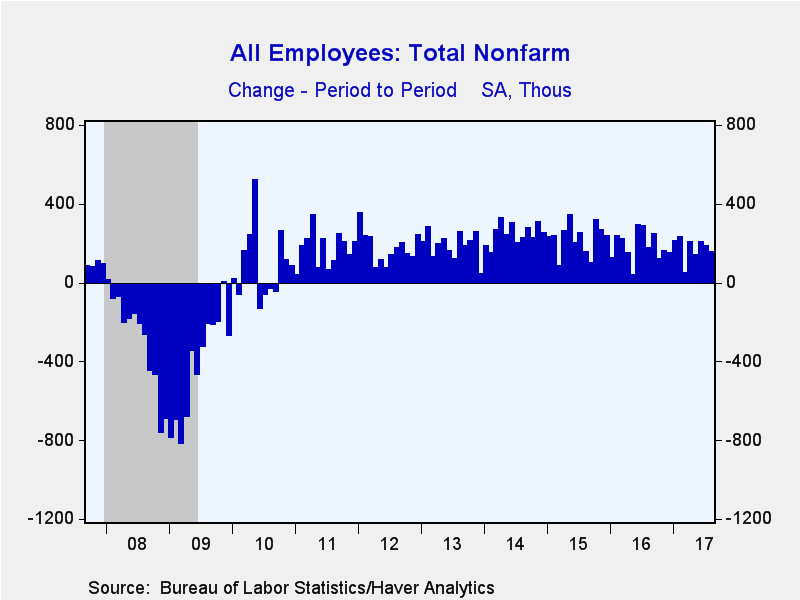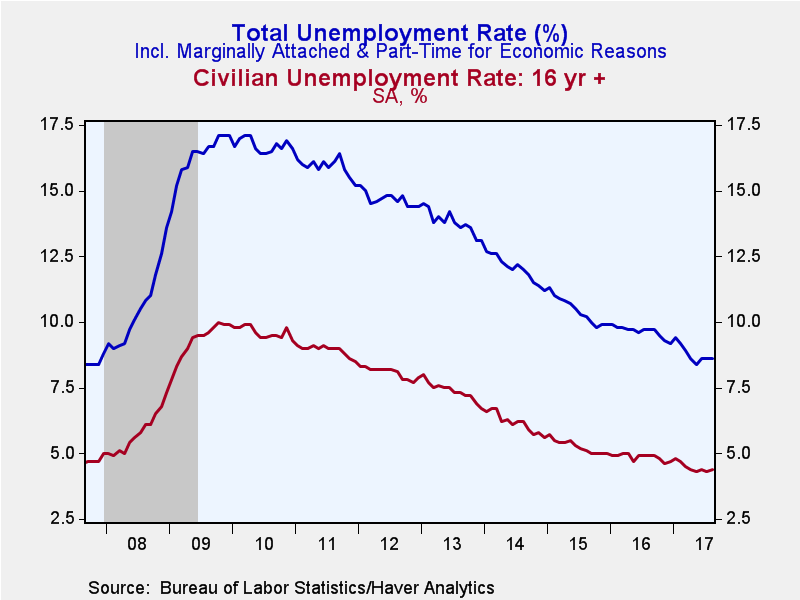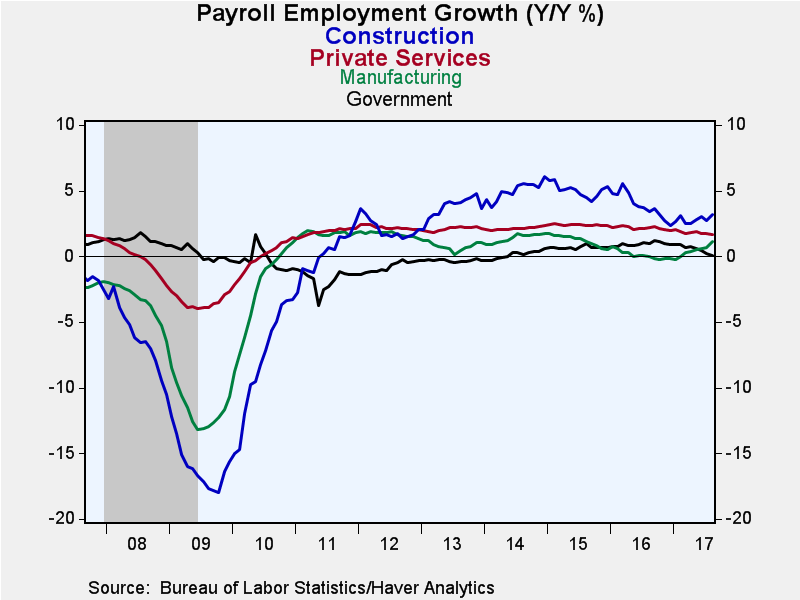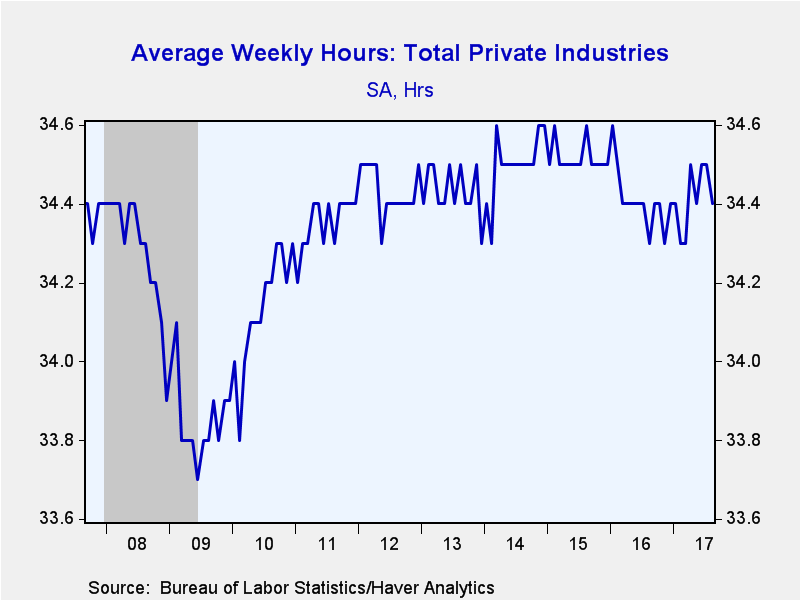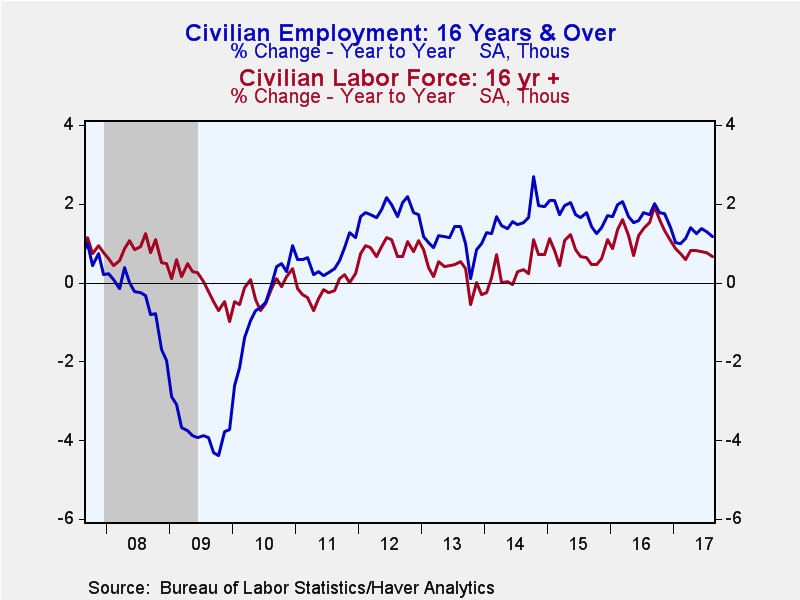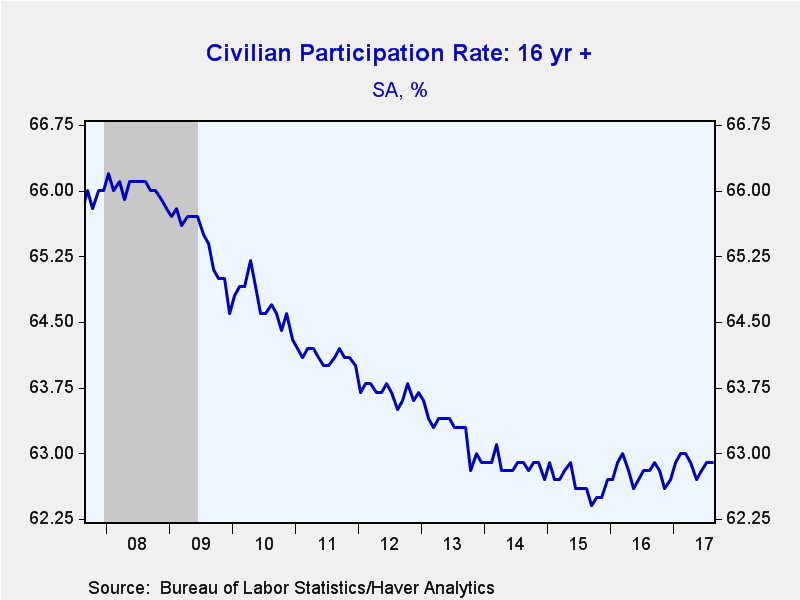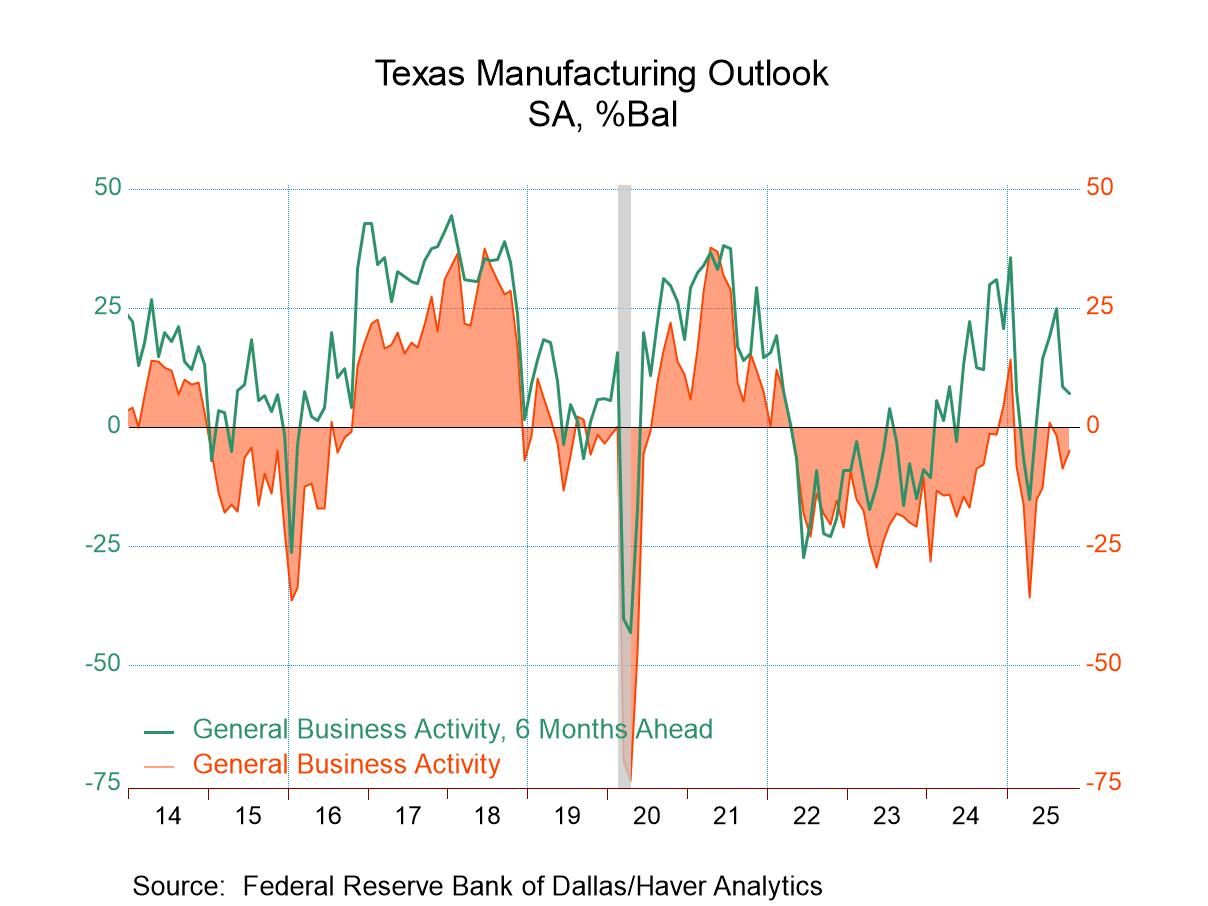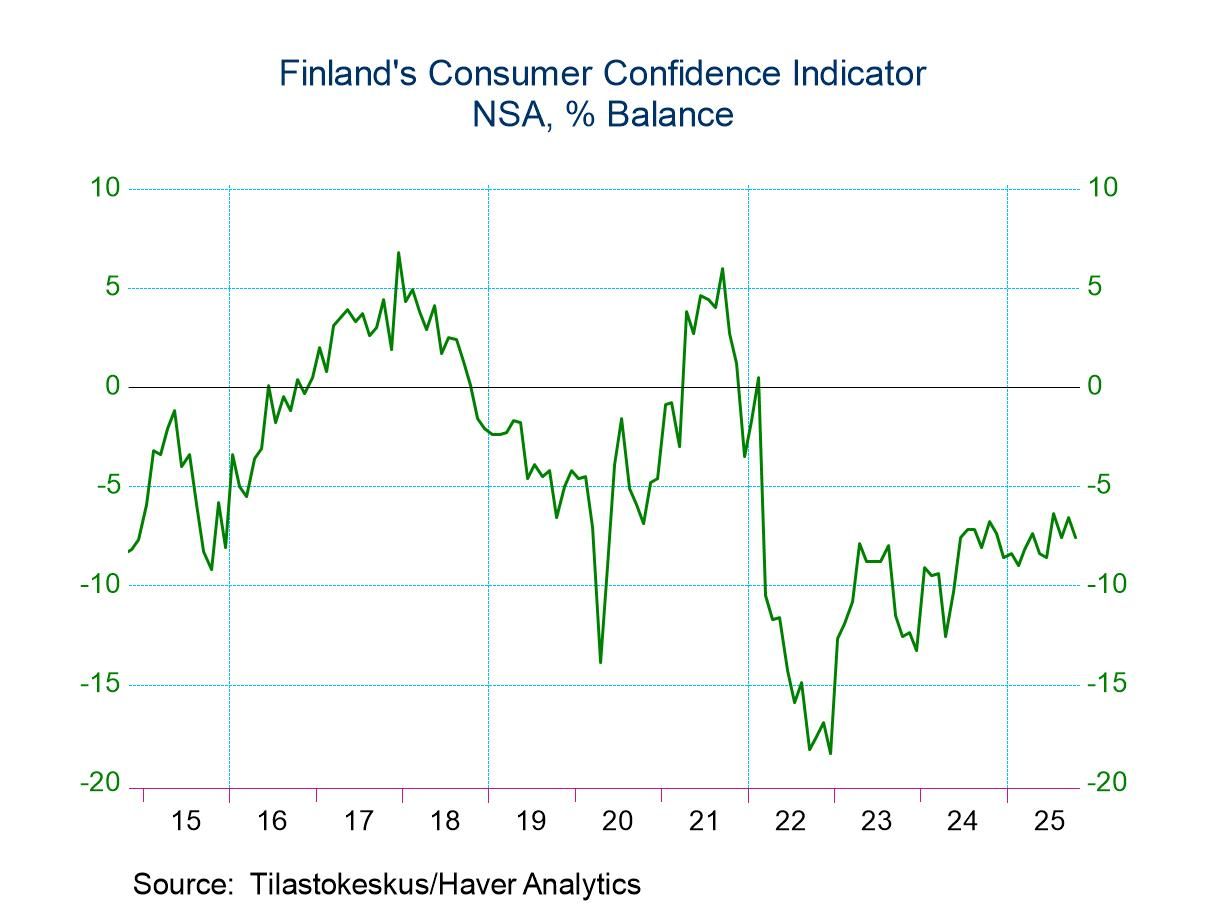 Global| Sep 01 2017
Global| Sep 01 2017U.S. Payroll Rise Disappoints & Jobless Rate Increases
by:Tom Moeller
|in:Economy in Brief
Summary
The job market weakened noticeably last month. Nonfarm payrolls increased 156,000 (1.5% y/y) during August following a 189,000 July increase and a 210,000 June gain. Together these two figures were revised down by 41,000. A 183,000 [...]
The job market weakened noticeably last month. Nonfarm payrolls increased 156,000 (1.5% y/y) during August following a 189,000 July increase and a 210,000 June gain. Together these two figures were revised down by 41,000. A 183,000 jobs increase had been expected in the Action Economics Forecast Survey. Last month's slower job gain was most pronounced in private services. The unemployment rate nudged up as expected to 4.4% from 4.3%. The overall unemployment rate, including those workers marginally attached and part-time for economic reasons, held steady at 8.6%. Average hourly earnings increased a tepid 0.1% (2.5% y/y). A 0.2% gain had been expected.
The slackening in last month's payroll employment gain centered in private services job growth of 95,000 (1.6% y/y) which followed a 179,000 increase. The number of leisure & hospitality jobs rose 4,000 (2.1% y/y) as restaurant and drinking place employment improved just 9,200 (2.5% y/y). That followed gains earlier this year which averaged 29,000 per month. Health care & social assistance employment also disappointed with a 16,600 increase (2.1% y/y) following an seven-month average gain of 36,000. Professional & business services jobs grew 40,000 (3.0% y/y) compared to a 49,000 seven month average. Temporary help employment ticked just 1,000 higher (4.3% y/y) after averaging 10,800 per month earlier this year. Financial activities employment grew a steady 10,000 (1.8% y/y). Trade, transportation & utilities employment grew 8,000 (0.4% y/y) and information services jobs declined 8,000 (-2.5% y/y).
In the goods-producing sector, factory employment jumped 36,000 (1.1% y/y), the strongest rise since August 2013. Construction sector jobs rose 28,000 (3.0% y/y), the strongest rise in six months. Mining sector employment rose 6,500 (9.7% y/y), the ninth straight month of advance.
The length of the average private sector workweek eased to 34.4 hours and has been depressed this year and last versus 2014 and 2015.Weakness in hours has centered in the private servicing-producing sector, notably leisure & hospitality, as well as professional & business services.
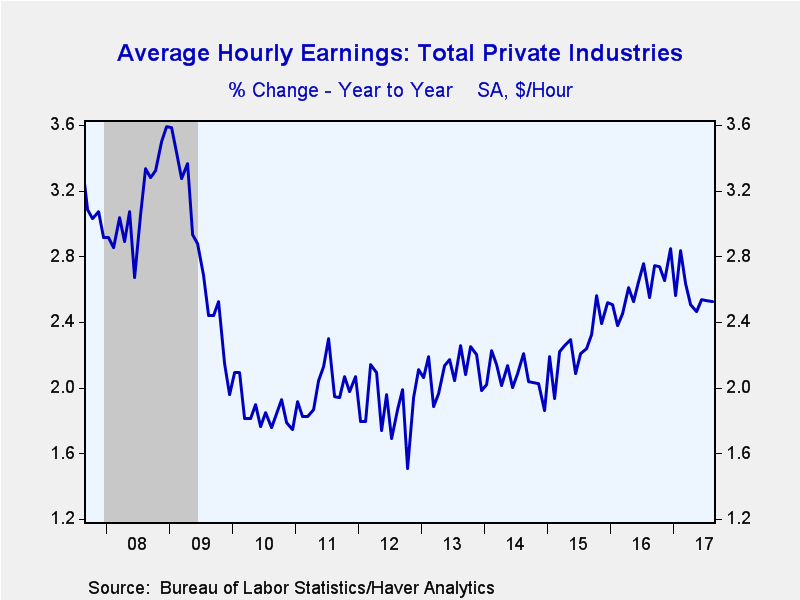 Average hourly earnings ticked just 0.1% higher, the weakest
increase since March. Twelve-month growth of 2.5% compared to December's y/y
high of 2.9%. Construction sector earnings growth of 2.7% y/y outpaced the 1.8%
gain in the factory sector. Private service sector earnings grew 2.6% y/y as leisure
& hospitality earning rose 3.5% y/y. Professional & business service
sector earnings rose 2.6% y/y but retail trade earnings rose just 1.6% y/y.
Average hourly earnings ticked just 0.1% higher, the weakest
increase since March. Twelve-month growth of 2.5% compared to December's y/y
high of 2.9%. Construction sector earnings growth of 2.7% y/y outpaced the 1.8%
gain in the factory sector. Private service sector earnings grew 2.6% y/y as leisure
& hospitality earning rose 3.5% y/y. Professional & business service
sector earnings rose 2.6% y/y but retail trade earnings rose just 1.6% y/y.
From the household employment survey, the rise in the unemployment rate to 4.4% reflected a 74,000 worker decline (+1.2% y/y) in employment and a 77,000 rise (0.7% y/y) in the labor force. The labor force participation rate held steady m/m at 62.9%, up from 62.7% in 2015. The average duration of unemployment fell to 24.4 weeks, just above its expansion low of 24.1 weeks.
By educational attainment, the unemployment rate for those with less than a high school diploma fell to 6.0%. For high school graduates with no college, it rose to 5.1% and for those with less than a bachelors degree, it ticked up to 3.8%. For college graduates, the unemployment rate fell to 2.4%.
The labor market data are contained in Haver's USECON database. Detailed figures are in the EMPL and LABOR databases. The expectations figure is in the AS1REPNA database.
| Employment: (SA, M/M Change, 000s) | Aug | Jul | Jun | Aug Y/Y | 2016 | 2015 | 2014 |
|---|---|---|---|---|---|---|---|
| Payroll Employment | 156 | 189 | 210 | 1.5% | 1.7% | 2.1% | 1.9% |
| Previous | -- | 209 | 231 | -- | -- | -- | -- |
| Manufacturing | 36 | 26 | 21 | 1.1 | 0.1 | 1.2 | 1.4 |
| Construction | 28 | -3 | 15 | 3.0 | 3.9 | 5.0 | 5.0 |
| Private Service-Producing | 95 | 179 | 165 | 1.6 | 2.1 | 2.4 | 2.1 |
| Government | -9 | -13 | 3 | 0.0 | 0.9 | 0.7 | 0.1 |
| Average Weekly Hours - Private Sector | 34.4 | 34.5 | 34.5 | 34.3 | 34.4 | 34.5 | 34.5 |
| Private Sector Average Hourly Earnings (%) | 0.1 | 0.3 | 0.2 | 2.5 | 2.6 | 2.3 | 2.1 |
| Unemployment Rate (%) | 4.4 | 4.3 | 4.4 | 4.9 | 4.8 | 5.3 | 6.2 |
Tom Moeller
AuthorMore in Author Profile »Prior to joining Haver Analytics in 2000, Mr. Moeller worked as the Economist at Chancellor Capital Management from 1985 to 1999. There, he developed comprehensive economic forecasts and interpreted economic data for equity and fixed income portfolio managers. Also at Chancellor, Mr. Moeller worked as an equity analyst and was responsible for researching and rating companies in the economically sensitive automobile and housing industries for investment in Chancellor’s equity portfolio. Prior to joining Chancellor, Mr. Moeller was an Economist at Citibank from 1979 to 1984. He also analyzed pricing behavior in the metals industry for the Council on Wage and Price Stability in Washington, D.C. In 1999, Mr. Moeller received the award for most accurate forecast from the Forecasters' Club of New York. From 1990 to 1992 he was President of the New York Association for Business Economists. Mr. Moeller earned an M.B.A. in Finance from Fordham University, where he graduated in 1987. He holds a Bachelor of Arts in Economics from George Washington University.


